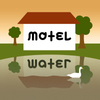Template talk:Optical illusions
| This is the talk page for discussing improvements to the Optical illusions template. |
|
| This template does not require a rating on Wikipedia's content assessment scale. It is of interest to the following WikiProjects: | ||||||||
| ||||||||
| This template was considered for deletion on 2020 March 22. The result of the discussion was "do not merge". |
List placement
[edit]What is the rational behind placing the list on a different line, "above", from the title/headline? Hyacinth (talk) 09:05, 12 October 2014 (UTC)
Ambigram
[edit]@HouseOfChange:, ambigrams are optical illusions, classified among the cognitive ones by Richard Gregory (ref 29, inversions by Scott Kim).
The book Ambigrams Revealed: A Graphic Designer's Guide To Creating Typographic Art Using Optical Illusions, Symmetry, and Visual Perception also confirms this classification.
Other sources that mention the ambigrams as optical illusions :
- Optical illusions by Gianni A. Sarcone and Marie-Jo Waeber,
- Eye Twisters by Burkard Polster,
- Masters of Deception: Escher, Dalí & the Artists of Optical Illusion by Al Seckel.
3D Ambigrams (like in the cover of the book Gödel, Escher, Bach) are clearly optical illusions. But also all 2D rotational or mirror words revealing an unexpected message. Ambigrams are ambiguous images, made of text. Perceptual shift ambigrams are also optical illusions. And figure-ground ambigrams (exploiting the negative space) as well. -- Basile Morin (talk) 00:17, 29 August 2021 (UTC)
- There is a difference between a visual pun and an optical illusion. The ambigram MOM/WOW, just for example, is not an optical illusion. This template links to various clear examples of optical illusions, including "ambiguous image." Adding a new link to ambigram isn't helpful. What do others think? HouseOfChange (talk) 00:51, 29 August 2021 (UTC)
- They do seem a bit different than many other optical illusions, but the connection is well sourced. Most optical illusions are purposely created, and these creations likely fall into that category when discussed in the sources. Randy Kryn (talk) 03:02, 29 August 2021 (UTC)
- There is a difference between a visual pun and an optical illusion. The ambigram MOM/WOW, just for example, is not an optical illusion. This template links to various clear examples of optical illusions, including "ambiguous image." Adding a new link to ambigram isn't helpful. What do others think? HouseOfChange (talk) 00:51, 29 August 2021 (UTC)

- Thanks for your remarks. The wow / mom ambigram is like the Necker cube : some will think of it as an ordinary cube, however, it is clearly an optical illusion. According to many publications I could read, ambigrams are "cognitive illusions", part of ambiguous images. Prefix ambi- means "both". The table below shows some similarities. -- Basile Morin (talk) 10:26, 29 August 2021 (UTC)
| Category | Ambiguous image | Description | Ambigram | Description |
|---|---|---|---|---|
| Perceptual shift illusions |  |
Rabbit–duck illusion. |  |
Perceptual shift ambigrams. |
| Figure-ground (perception) (negative space) |  |
Rubin's vase. |  |
Figure-ground ambigrams. |
| Reversible figures |  |
Reversible image. |  |
Rotational ambigrams. |
| Impossible objects |  |
Schroeder stairs. |  |
3D ambigrams. |
| Ambiguous images |  |
Spinning dancer. |  |
Heterograms. |
| Pareidolia |  |
"Laughing" lakes. |  |
Mirror ambigrams. |
| Natural illusions |  |
Mirage. |  |
Natural ambigrams. |
- In short, ambigrams are just special cases of ambiguous images, and thus should be included in the template, IMO. -- Basile Morin (talk) 10:26, 29 August 2021 (UTC)
Basile Morin I respect your hard work on this topic and have un-reverted your addition of this somewhat ambiguous item to this already too-long list. I only hope that the list will not accrete further with special cases of optical-illusion categories that were already included on the list. HouseOfChange (talk) 14:01, 29 August 2021 (UTC)
 Agree, thank you. -- Basile Morin (talk) 14:28, 29 August 2021 (UTC)
Agree, thank you. -- Basile Morin (talk) 14:28, 29 August 2021 (UTC)
